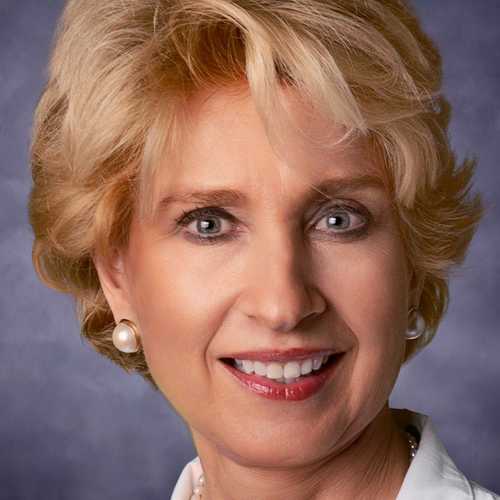

Published April 2017
What initially interested you about joining the College?
I was totally captivated by the history of the College, and its rich collections—even the spectacular building was a thrill to visit! And then once I knew more about the institution, its position as a “Switzerland” amidst the multicultural medical institutions of Philadelphia, and its many offerings, I was excited by its potential as a home base for new initiatives to benefit our increasingly diverse health care community.
Tell us about your path to becoming the Ophthalmologist-in-Chief at Wills Eye.
As with all of us in medicine, it was a long path, starting educationally at the Bryn Mawr School in Baltimore, then on to Princeton where I majored in Philosophy, to Harvard Medical School, and then to Johns Hopkins. I began as an intern in surgery, then trained in Ophthalmology at the Wilmer Eye Institute, stayed on for a fellowship in retinal surgery, and afterwards served as the first female chief resident at Wilmer. I joined the faculty when I finished my training and spent many wonderful fellow SPOTLIGHT: CEO NEWSLETTER APRIL 2017 years there—I was particularly honored to hold the Katharine Graham Chair at Hopkins, since I was an admirer of Mrs. Graham and her intrepid leadership of the Washington Post, and also the Robert Bond Welch MD Chair, as he was one of my mentors. Now I look out my office window at Wills to see the cupola of Pennsylvania Hospital, which was founded by one of Dr. Welch’s forbears, Thomas Bond MD, with Benjamin Franklin! Life really has a way of coming full circle, doesn’t it? It was the opportunity of a lifetime for me in 2007 to come to the incomparable Wills Eye Hospital in this leadership role, and I have absolutely relished it—and being part of Philadelphia!
Through initiatives like the Karabots Junior Fellows Program, the College is attempting to guide young people from Philadelphia towards college and a career in healthcare. In that program (and our other education programs), young women make up the majority of the participants. As someone who has risen to the top of her profession, what advice do you have for the next generation of women in medicine?
Medicine is a wonderful career for women, and we have much to contribute to patient care, to the education of the next generation, and to research, but there are definite barriers to overcome. I encourage young women to aim high, to work hard, and to stay positive. It is also key to learn about the societal barriers and implicit biases that we all face, so as not to take them personally and to be prepared to help change them where possible, or work around them constructively where necessary. And then pay it forward and pay it back—help other women to achieve their dreams.
Speaking of the next generation of physicians, how do you see the College positioning itself to best appeal to today’s younger working practitioners who find it difficult to make time for pursuits outside of work and family?
The College has made tremendous strides in this regard, increasing its online offerings, supporting meaningful symposia that are “value added” for even the busiest professional, and continuing to serve as a locus for different interest groups to convene and interact. Moving forward it will be important to understand better exactly what the unmet needs are for this younger generation, and how to best accommodate them, keeping in mind the increasing diversity of background and interest that offer opportunities for expanded offerings.
As a Trustee of the College, tell us about your vision for the future of this institution.
As a new Trustee, my vision is still in evolution, but it includes seeing The College of Physicians grow and flourish as a unique and treasured resource for the truly remarkable Philadelphia medical community. There are very few cities in the world that have the richness of past heritage and current talent and innovation that Philadelphia does. What a phenomenal nexus medically, scientifically, educationally, and artistically — to name just a few of our strong points! Capitalizing on these huge advantages, harnessing the strength of an increasingly diverse and multitalented generation, and parlaying this into cutting edge, engaging, inspiring programming is the challenge to which I know the College will rise, and I look forward to doing my best for this worthy goal.
Tell us about one of your favorite items in the Library or the Museum.
I’d have to pick the collection of handcrafted wax eye models demonstrating different eye diseases, made by the prestigious Paris firm of Maison Tramond in 1882. It was fascinating to discover that these realistic models were used both for medical training and for exhibition to the general public—they are works of art as well as anatomically accurate and amazingly true to life, and run the gamut from a black eye to an orbit completely destroyed by cancer and an eyeball pushed out of its socket by a polyp invading from the nasal cavity.